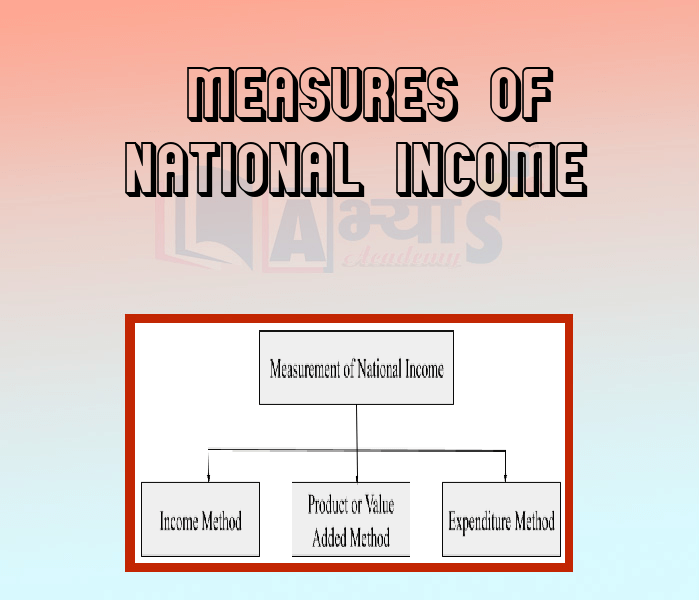Measures of National Income










Measures Of National Income
There are a number of measures pertaining to national income and methods of measurement relating to them:
(A) Gross Domestic Product (GDP):
GDP is the total value of goods and services produced within the country during a year. It is defined as the market value of the output of final goods and services produced in the domestic territory of a country during an accounting year. There are three different ways to measure GDP - Product Method, Income Method and Expenditure Method.
(B) GDP at Factor Cost:
GDP at factor cost is the sum of net value added by all producers within the country. GDP at Factor Cost = Net Domestic Product at Factor Cost + Depreciation
(C) Net Domestic Product (NDP):
NDP is the value of net output of the economy during the year. Net Domestic Product GDP at Factor Cost - Depreciation
(D) Nominal and Real GDP:
When GDP is measured on the basis of current price, it is called GDP at current prices or nominal GDP. On the other hand, when GDP is calculated on the basis of fixed prices in some year, it is called GDP at constant prices or real GDP.
(E) GDP Deflator:
GDP deflator is an index of price changes of goods and services included in GDP.
(F) Gross National Product (GNP):
GNP is the total measure of the flow of goods and services at market value resulting from current production during a year in a country, including net income from abroad.
(G) Net National Product (NNP):
NNP includes the value of total output cf consumption goods and investment goods. But the process of production uses up a certain amount of fixed capital. Some fixed equipment wear out, its other components are damaged or destroyed, and still others are rendered obsolete through technological changes.
(H) Domestic Income:
Income generated (or earned) by factors of production within the country from its own resources is called domestic income or domestic product.
(I) Per Capita Income:
The average income of the people of a country in a particular year is called Per Capita Income that year. This concept also refers to the measurement of income at current prices and at constant prices.
Students / Parents Reviews [10]
One of the best institutes to develope a child interest in studies.Provides SST and English knowledge also unlike other institutes. Teachers are co operative and friendly online tests andPPT develope practical knowledge also.

Aman Kumar Shrivastava
10thBeing a parent, I saw my daughter improvement in her studies by seeing a good result in all day to day compititive exam TMO, NSO, IEO etc and as well as studies. I have got a fruitful result from my daughter.

Prisha Gupta
8thI have spent a wonderful time in Abhyas academy. It has made my reasoning more apt, English more stronger and Maths an interesting subject for me. It has given me a habbit of self studying

Yatharthi Sharma
10thMy experience with Abhyas academy is very good. I did not think that my every subject coming here will be so strong. The main thing is that the online tests had made me learn here more things.

Hiya Gupta
8thIt has a great methodology. Students here can get analysis to their test quickly.We can learn easily through PPTs and the testing methods are good. We know that where we have to practice

Barkha Arora
10thIt was a good experience with Abhyas Academy. I even faced problems in starting but slowly and steadily overcomed. Especially reasoning classes helped me a lot.

Cheshta
10thAbhyas Methodology is very good. It is based on according to student and each child manages accordingly to its properly. Methodology has improved the abilities of students to shine them in future.

Manish Kumar
10thA marvelous experience with Abhyas. I am glad to share that my ward has achieved more than enough at the Ambala ABHYAS centre. Years have passed on and more and more he has gained. May the centre flourish and develop day by day by the grace of God.

Archit Segal
7thAbhyas is a complete education Institute. Here extreme care is taken by teacher with the help of regular exam. Extra classes also conducted by the institute, if the student is weak.

Om Umang
10thMy experience with Abhyas is very good. I have learnt many things here like vedic maths and reasoning also. Teachers here first take our doubts and then there are assignments to verify our weak points.
